In-Home Heists

You’re running late for work (again) and can’t find your watch. You could have sworn you left it on the dresser last night, but now it’s not there. It’s not like it could have gotten up and walked away – unless it had help. Did someone sneak into your bedroom while you slept and steal your watch?
When a person goes missing, police often look to their family or friends first. But when items go missing from our home, we tend to look for outside perpetrators. After all, burglars don’t lurk in our own home. Do they?
To find out, we surveyed over 1,000 people about their histories with in-home theft. We asked them if they had ever stolen from family or friends and about what was most often taken. Continue reading to see what your closest family and friends may be stealing from you.
Looting Loved Ones
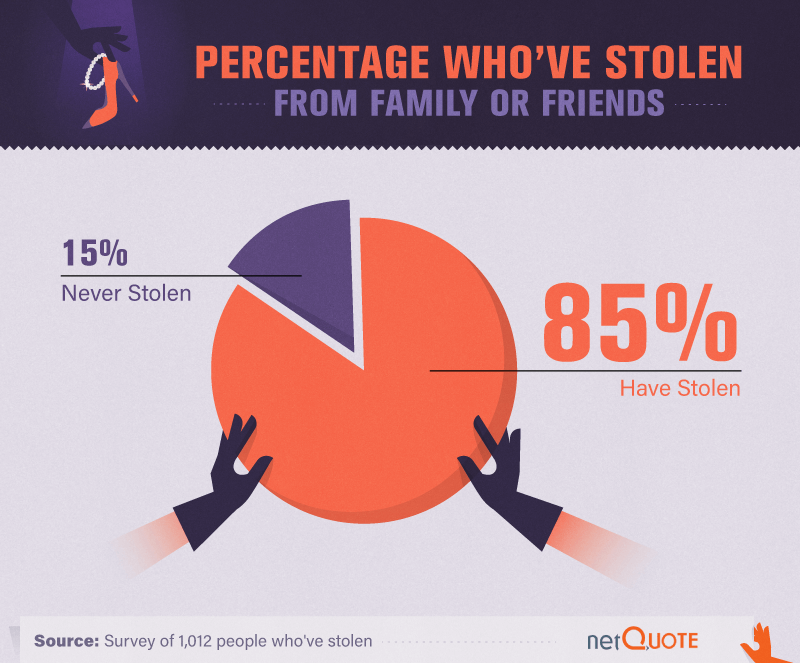
According to our survey, 85 percent of respondents confessed to stealing from family or friends. So when your favorite perfume is suddenly a lot emptier than it should be, or you’re missing $20 from your wallet, it’s possible the perpetrator is living under the same roof as you.
What are the items stolen most though, and what are their values?
What In-Home Thieves Frequently Steal
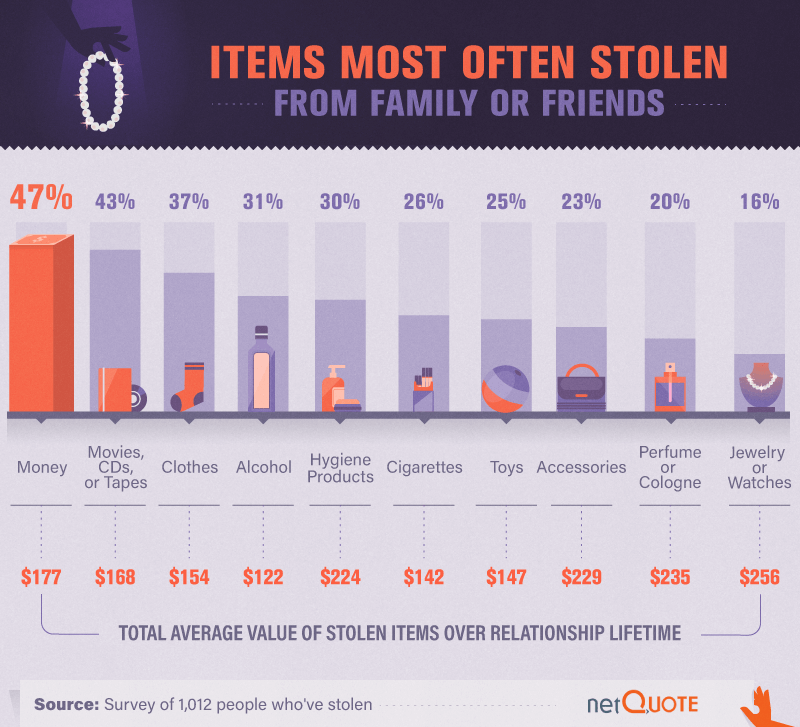
You might want to think twice about leaving your wallet out in the open at home. Money was the No. 1 most stolen item, with nearly half of respondents saying they’ve taken currency. Your jewelry and watches, on the other hand, are probably safe. Our survey respondents said they were more likely to steal perfume, cologne, or accessories before jewelry and watches.
That said, while not many in-home thieves go after their housemate’s jewelry, when they do, it may cause the greatest financial harm. The estimated value of stolen jewelry and watches was higher than any other theft. The second and third most valuable items to have stolen were accessories and perfume or cologne.
In-home thieves were actually more interested in entertainment like movies, CDs, and tapes than precious gems. And over one-third of respondents admitted to stealing clothes. A quarter of respondents said they’d stolen toys. Alcohol and cigarettes were also popularly pilfered items, but they carried the lowest estimated value at just over $120 and $141, respectively.
Targets of In-Home Theft
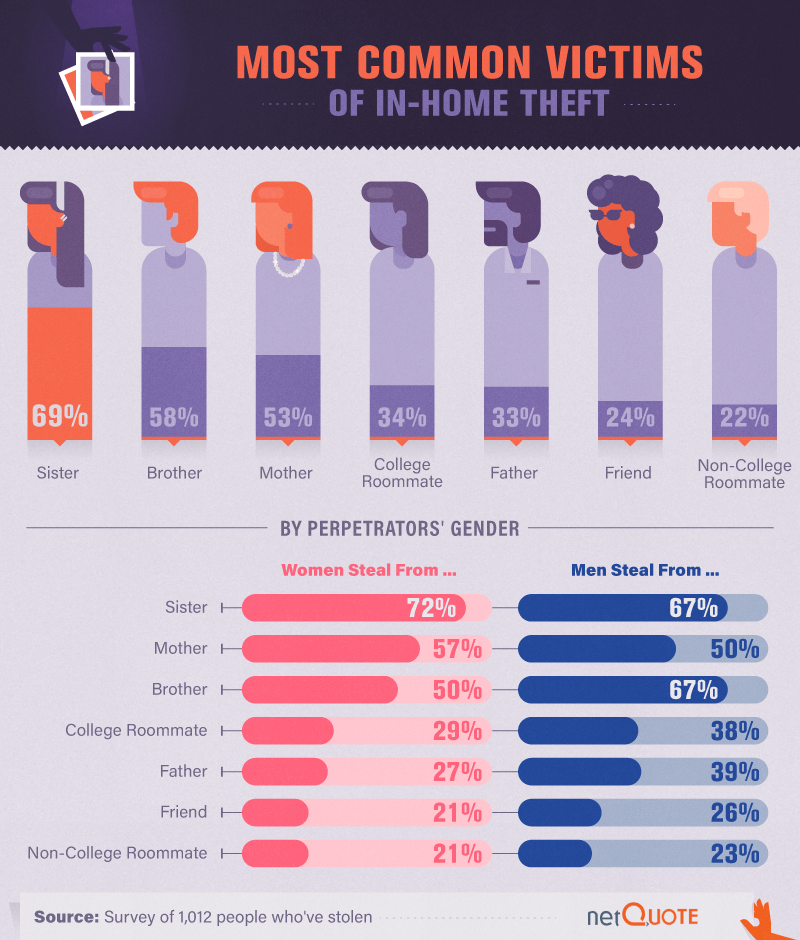
Who are the victims of these in-home thefts? By and large, sisters were the most likely to be burglarized by family or friends. Women were the most likely to steal from their sisters than anyone else, but men were equally likely to steal from a brother as they were a sister. Women, on the other hand, would steal from their mother before they’d poach something from a brother.
Putting a Dollar Value on Theft
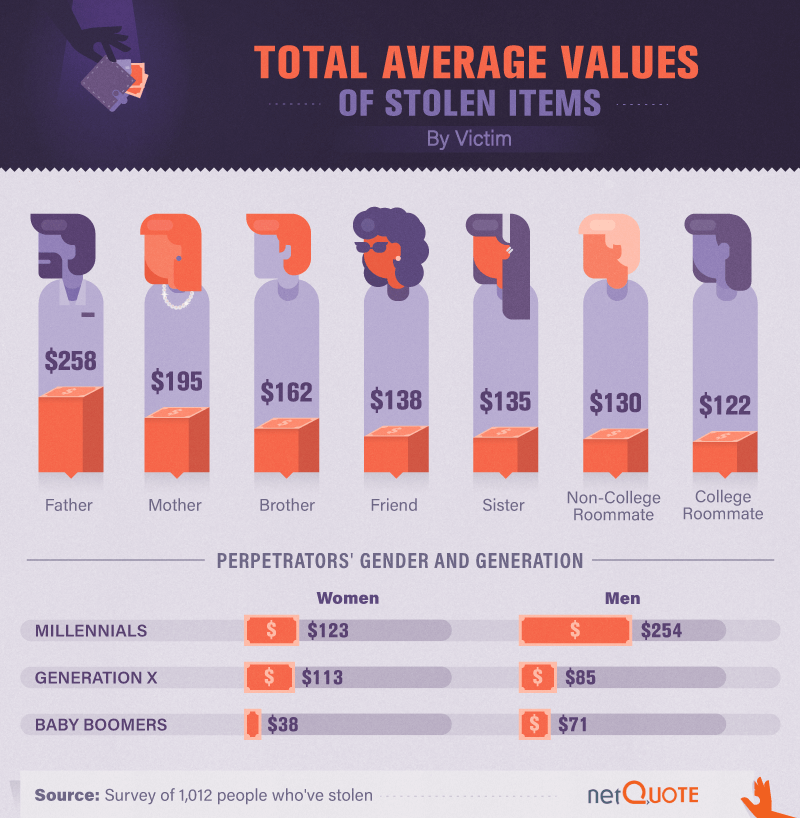
We know sisters are stolen from more than brothers and mothers more than fathers, but this doesn’t mean sisters and mothers get hit the hardest by in-home thieves. In fact, the average value of the items stolen from brothers outweighed items stolen from sisters, and fathers had the biggest financial hit when it came to money and items stolen. The average value of items stolen from dads was $63 more than the cost to the next highest victim (mothers).
Despite being the most frequent targets, sisters lost less value-wise than friends. And while people stole from college roommates more than non-college roommates, it was the latter who lost items of greater value on average.
When we break down the average value of items stolen by the perpetrator, sticky-fingered millennials stole the highest-value items. Male millennials were responsible for the greatest heists, at an average value of $254 in total. This was $131 more than what female millennials stole.
Baby boomers stole the smallest-value items. The average value of items stolen by male baby boomers was $71, compared to $38 for female baby boomers.
Gen Xers’ theft value fell between millennials and baby boomers. However, female Gen Xers stole higher-value items than the male demographic on average.
What Women vs. Men Steal Most
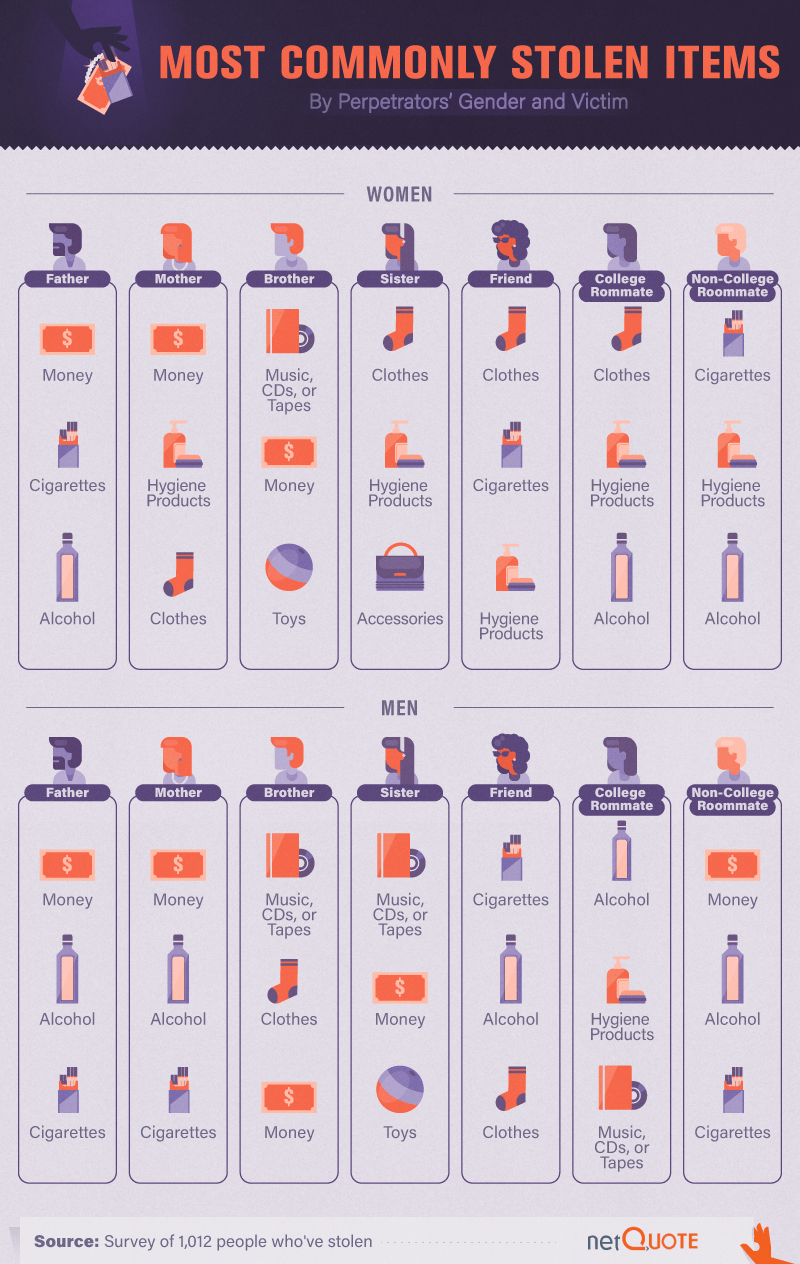
So who is stealing from whom? Female thieves most often stole clothes and hygiene products from their sisters and college roommates and money and clothes from their mothers and friends. But from their non-college roommates, they were more likely to take cigarettes.
When stealing from their male relatives and acquaintances, women were more likely to go after money and entertainment. They often stole alcohol from their fathers and non-college roommates but only took cigarettes from friends.
Men liked to steal cigarettes too, but preferred alcohol more so. They also stole money most often from their mothers, fathers, and non-college roommates.
From their college roommates, men opted for alcohol, hygiene products, and entertainment.
Protecting What’s Yours
Safeguarding your valuables from in-home thieves can be hard. You can’t exactly lock your siblings or roommates out of the house, much as you may like to from time to time. Even keeping outside burglars at bay can be hard. While you can’t always prevent it, you can help insulate yourself from financial harm.
Homeowners insurance can provide you with financial protection if your home is ever broken into. At netQuote, we can help you find the coverage you and your home need. With easy, side-by-side comparisons of top insurers, you can know you’re getting coverage at the best possible price.
Methodology
We surveyed 1,012 people through Amazon’s Mechanical Turk. Of these, 489 participants were women, 520 were men, and three people did not list their gender. Participants ranged in age from 18 to 82 with a mean of 38. An attention check question was used in our survey to gauge whether the participant was actively paying attention to the questions. If the attention check was failed, that participant was excluded from the analysis.
The data we are presenting relies on self report. There are many issues with self reported data. These issues include, but are not limited to: selective memory, telescoping, attribution, and exaggeration.
Fair Use Statement
If you like this content, please don’t be a thief and take credit. Share the images and content of this article for noncommercial purposes but link back to this page when doing so.
